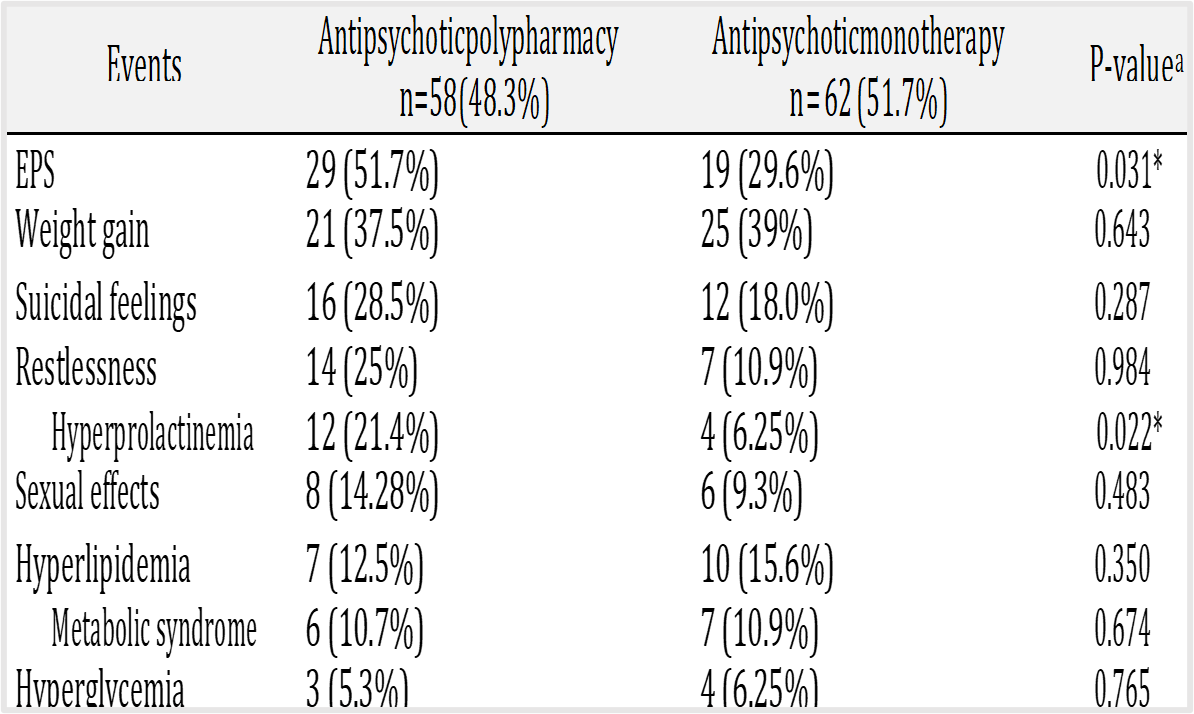Abstract
Antipsychotic polypharmacy is a routine practice despite guidelines to avoid combining medications that have not been successfully trialled. This practice results in severe side effects and creates an unnecessary expense for patients, although many medical practitioners prescribe antipsychotic combinations to treat difficult and acute psychosis. This study was conducted to determine the proportions and patterns of antipsychotic polypharmacy and possible associated risks among patients. This retrospective study was conducted among patients prescribed multiple antipsychotic medications at Kajang Hospital, in Malaysia, from June to August of 2017, and data were collected from patients files admitted to the hospital between January and December 2016. The risks and usage of polypharmacy were assessed on the basis of clinical outcomes, including prescription medication non-adherence, adverse drug effects, drug-drug interactions, inappropriate prescriptions, hospitalization, functional decline, and mortality resulting from antipsychotic polypharmacy or monotherapy effects. Of the 120 participants, 62 were prescribed antipsychotic monotherapy (52%) and 58 were prescribed antipsychotic polypharmacy (48%). Duration of illness 53, 44.2%) was statistically and significantly associated with antipsychotic polypharmacy (P ˂ 0.05). Adverse effects that are associated with antipsychotic medications include hyperprolactinemia (12 (21.4%) polypharmacy & 4 (6.25%) monotherapy) and extrapyramidal side effects (29 (51.7%) polypharmacy & 19 (29.6%) monotherapy). Other side effects included weight gain ( 21 (37.5%) polypharmacy & 25 (39%) monotherapy), hyperlipidemia(7(12.5%) polypharmacy & 10 (15.6%) monotherapy), and metabolic syndromes (6 (10.7%) polypharmacy & 7 (10.9%) monotherapy), although to a statistically insignificant extent. To prevent mismanagement of medications, more information about the risks and use of antipsychotic polypharmacy should be provided to patients.
Full text article
Authors

This work is licensed under a Creative Commons Attribution-NonCommercial-NoDerivatives 4.0 International License.

